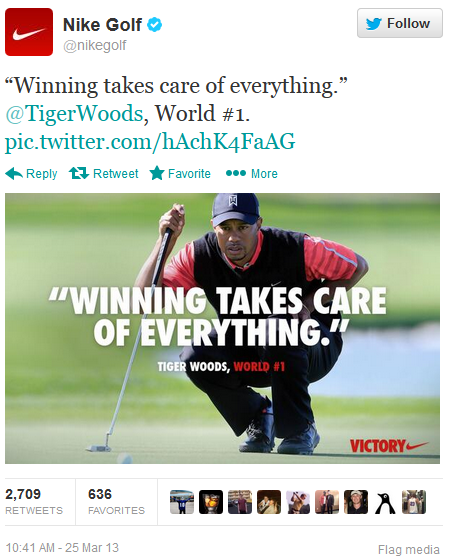Visiting the Nike campus in Beaverton, Ore., is a surreal experience. You leave the normal, sleepy world of suburban Portland and enter a world clearly focused on winning. Across the campus — from the iconic Michael Jordan statue to buildings named after the all-time bests in sports — the brand identity couldn’t be more clear.
We here at The Starr Conspiracy define Drive as the thing that gets the key people in your organization out of bed every morning. Companies like Nike have a strong sense of Drive. Winning matters to everyone who matters at Nike.
In late March, Tiger Woods, one of Nike’s biggest brand ambassadors, regained the title of top-ranked golfer in the world. Nike’s golf division tweeted this ad, which was widely panned:

Given Woods’ recent history, it probably wasn’t the most sensitive brand message to put out there. They took some justified heat. But they also got a few things right:
- Evaluate your brand capital — Can your brand take the blowback from a risk gone bad? Stronger brands can take more substantial risks because they can weather poor publicity.
- When you take risks, do it within the context of your brand — Nike’s obsession with winning is clear in everything they do. Make sure that any risk you take supports your brand loud and clear.
- Own the risk outcome — The best risks get a reaction. When you take ownership of the risk outcome (good or bad), you naturally get better at stepping outside your comfort zone.
- Good or bad, you have to move on — When Nike received backlash, they didn’t stop running ads or coming up with new ideas. Digest the experience and continue taking risks, with the benefit of your newly found knowledge.





